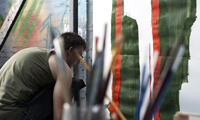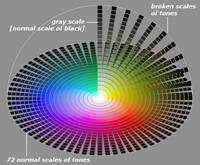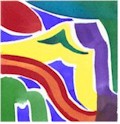Home > Directory Home > Drawing Lessons > Art Principles & Elements > Art Contrast
ART CONTRAST PRINCIPLES & ELEMENTS IN DESIGN COMPOSITION : Use Colors and Contrast to Create Interest in Drawings
|
|
Colour: Get to Grips with Balance and Contrast When Painting
The effects made by the following colour schemes can be seen more easily if you paint in stripes, but be as creative as you like with your compositions. Notice how each stripe, paint trail or shape that has already been laid down has to somehow work together with the next. Chevreul's "Principles of Color Harmony and Contrast"
The Principles of Harmony and Contrast of Colors by Michel-Eugène Chevreul – This classic "color theory" text, published in 1839 as The Law of Simultaneous Color Contrast (translated into English in 1854), is an artistic milestone, one of the first systematic studies of color perception and a compendium of color design principles that many 19th century French painters from Delacroix to Matisse attempted to apply in their art.
The function of contrast in defining meaning can be explained by comparing fundamental opposites: dark/light, soft/hard, fast/slow. Examples like these are useful because everyone understands the extremes they imply, but while there are extremes, there are no absolutes. The values are merely relative.
Two colors, side by side, interact with one another and change our perception accordingly. The effect of this interaction is called simultaneous contrast.
Use these six principles of contrast to paint color with confidence and style. Contrast - Basic Principles of Design - When applying contrast to Web designs, think beyond color. Color contrast can easily be overdone. But by using more subtle differences in contrastin font sizes, layout shapes, images, and text styles (like lists versus long blocks of prose) you can take advantage of contrast without blasting your readers with a loud contrasting color scheme. Drawing Tip: Using Contrast to Pop or Not : Using Contrast to Your Advantage - Contrast is the difference between light and dark in a picture. Black-and-white is high contrast, while similar shades of gray - or white against a very light gray, or black and a very dark gray - are low contrast. Of course, there is a scale of grays somewhere between the two extremes - a mid-gray against white, or a black against a mid gray - in the middle. |
Privacy Policy ..... Contact Us









